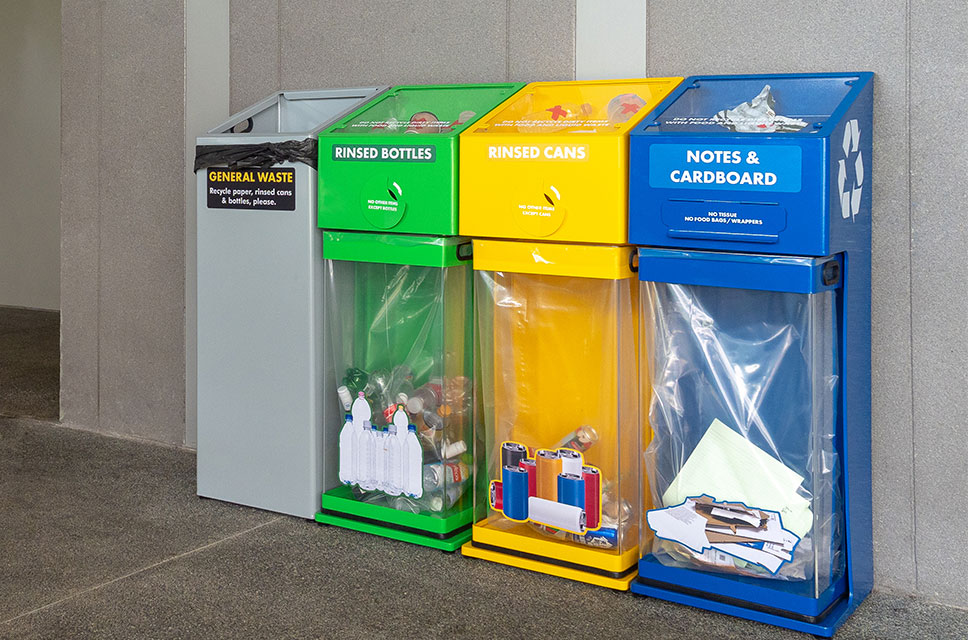Nudging the NUS Community to Recycle Right
Recycling bins for paper, metals and plastics can be found in various locations across the NUS campus. Food and liquid waste contamination in these recycling bins often render the recyclables deposited unsuitable for recycling. The National Environment Agency (NEA) reports that about 40 per cent of what is put into recycling bins and chutes cannot be recycled or are contaminated by food waste[1].
To understand the contamination problem in recycling bins on campus, the NUS Waste Minimisation and Recycling Taskforce conducted a contamination study of recycling bins at University Town (UTown) and the Faculty of Engineering between January and March 2020 to uncover insights into the recycling behaviour of the NUS community.
The study revealed that the contamination rate, i.e. the proportion of non-recyclables relative to all items in the recycling bin, for plastic recycling bins was high, at an average of 57 per cent and 46 per cent for UTown and NUS Engineering respectively. The metal recycling bins, on the other hand, had a lower contamination rate of 37 per cent and 15 percent at UTown and NUS Engineering respectively. Contamination was also found to be higher in recycling bins placed near food establishments, and lower when the recycling bins were paired with general waste bins without lids.
To lower the contamination in recycling bins, the Taskforce partnered an Industrial Design student from the NUS School of Design and Environment to develop and test a new “Recycle Right” bin design at UTown which aims to nudge people to recycle correctly.
Notable features of the Recycle Right bins include an actual display of unacceptable items to remind people of what they should avoid putting into the bins, as well as a transparent bin body to show people how others are recycling right. To get people to pay attention to what they are actually putting into the bins, a smaller, slidable opening was incorporated to allow only the right items, e.g. plastic bottles and metal cans, to be slotted into the respective bins.
A follow-up contamination study found that the new Recycle Right bins reduced the contamination rate of the plastic bottle recycling bins from about 60 per cent to 27 per cent in UTown. Another unexpected benefit was that cleaners were only required to clear the bins twice a week, compared to once daily in the past. This was because there was less trash, and the transparent bins made it easier for them to know when the bins needed clearing.
The new bins will be progressively rolled out on campus, starting with the UTown and Faculty of Engineering precincts in May 2021. The Taskforce is also working with external stakeholders to test the use of the bins in other locations, including a primary school and shopping malls.
_____
[1] https://www.channelnewsasia.com/news/singapore/in-focus-singapore-recycling-sustainability-blue-bins-waste-12972634

